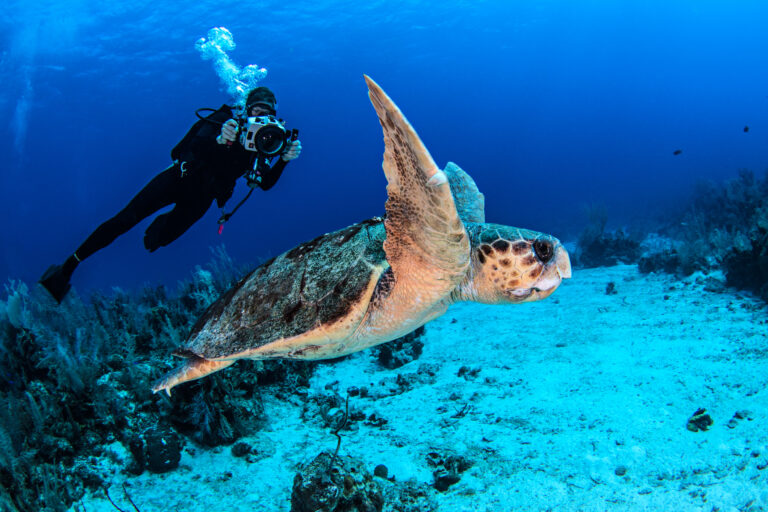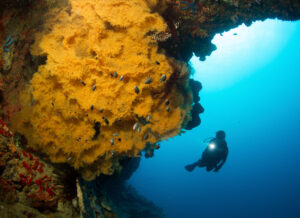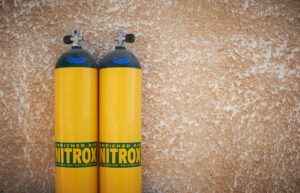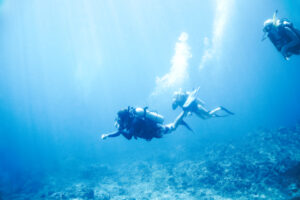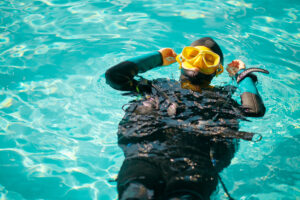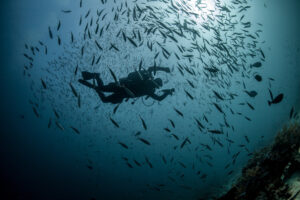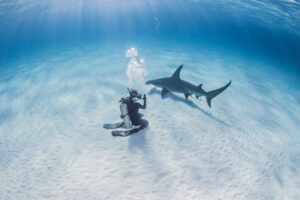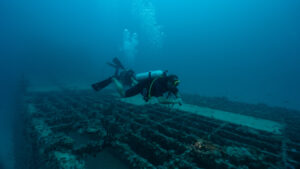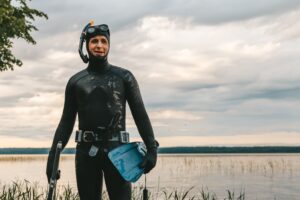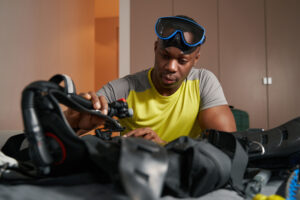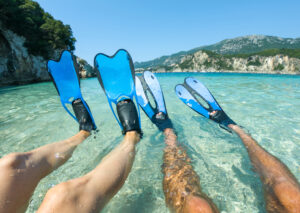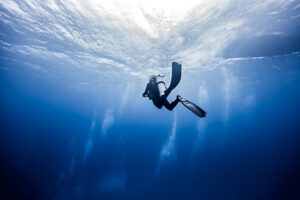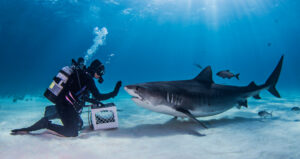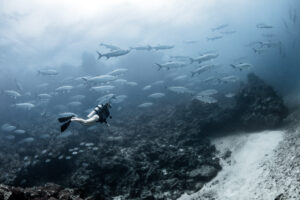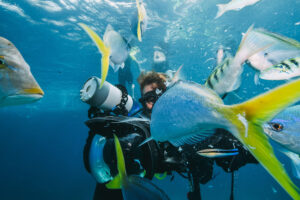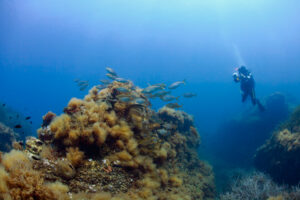What is Multilevel Diving?
Multilevel diving is a technique in scuba diving that involves changing depths multiple times throughout a single dive. Unlike traditional dives, where a diver descends to a certain depth and remains there until starting their ascent, multilevel diving takes advantage of varying depths to maximize bottom time and minimize the risk of decompression sickness (DCS). This method is particularly beneficial for exploring underwater environments with significant depth variations, such as coral reefs, wrecks, and underwater walls.
The advent of advanced dive computers and decompression algorithms has made multilevel diving more accessible and safer for divers. These tools help track nitrogen absorption in the body in real-time, allowing divers to plan their ascents and descents more accurately. As a result, multilevel diving has become a popular practice in both recreational and technical scuba diving communities, offering a more flexible and efficient approach to underwater exploration.
Historical Development
Multilevel diving, as practiced today, owes much to the evolution of diving technology and decompression science. In the early days of scuba diving, divers relied on simple depth gauges and dive tables to plan their dives. These tools were limited to single-depth profiles, making multilevel diving impractical and risky. The development of dive computers in the 1980s marked a significant turning point, providing divers with real-time data on their depth, time, and decompression status.
The initial dive computers were basic and had limited functionality, but they laid the groundwork for more sophisticated models. By the 1990s, dive computers had become more advanced, incorporating complex decompression algorithms that could accommodate multilevel diving. These algorithms, such as the Bühlmann and Varying Permeability Model (VPM), allowed divers to track nitrogen absorption dynamically, making multilevel diving safer and more efficient.
Advancements in decompression theory also played a crucial role in the development of multilevel diving. Early decompression models were based on linear assumptions about gas absorption and elimination. However, as understanding of decompression physiology improved, more accurate and flexible models emerged. These models took into account the non-linear nature of gas absorption and the varying permeability of tissues, providing a more realistic representation of decompression processes.
Principles of Multilevel Diving
The primary benefit of multilevel diving is the ability to extend bottom time while reducing the risk of decompression sickness. By ascending to shallower depths at intervals during a dive, divers can off-gas nitrogen more effectively. This practice leverages the principles of gas absorption and elimination, where the body absorbs nitrogen under pressure and releases it during ascent. In multilevel diving, the diver ascends to a series of predetermined depths, allowing for controlled decompression and increased bottom time.
Decompression models used in planning multilevel dives are essential for ensuring safety. The Bühlmann model, for example, calculates safe ascent profiles based on a series of compartments with different half-times for nitrogen absorption and release. This model helps divers determine the optimal ascent rate and depth intervals to minimize the risk of DCS. Similarly, the VPM model accounts for the varying permeability of tissues, providing a more nuanced approach to decompression.
Another key aspect of multilevel diving is gas management. Divers must carefully monitor their air supply, especially when changing depths multiple times. The deeper the dive, the faster the consumption of air due to increased pressure. Therefore, planning for sufficient air reserves and using equipment like dive computers to track air consumption in real-time is crucial for safe multilevel diving. Additionally, understanding the impact of water temperature and physical exertion on air consumption helps divers plan more effectively.
Dive Planning and Execution
Planning a multilevel dive involves several steps to ensure safety and maximize bottom time. The process begins with selecting a dive site suitable for multilevel diving, typically one with varying depths and interesting underwater features. Next, divers must gather information about the site, including depth ranges, currents, and potential hazards. This information is critical for creating a detailed dive plan that includes specific depths and times for each level of the dive.
Dive computers play a pivotal role in executing multilevel dives. These devices track depth, time, and nitrogen absorption in real-time, providing divers with continuous updates on their decompression status. Before the dive, divers can program their computers with the planned depth profile, ensuring that the device can guide them through the various levels. During the dive, the computer alerts divers to necessary depth changes and safety stops, helping to prevent DCS.
Executing a multilevel dive requires careful attention to ascent rates and depth changes. Rapid ascents can lead to nitrogen bubbles forming in the bloodstream, increasing the risk of DCS. Therefore, divers must ascend slowly and make planned stops at shallower depths to allow for gradual decompression. These stops, known as safety stops, are typically made at depths of 3-5 meters (10-15 feet) and last for three to five minutes. Safety stops are a standard practice in multilevel diving, providing an additional margin of safety.
Equipment Considerations
Multilevel diving requires specific equipment to ensure safety and efficiency. A reliable dive computer is essential for tracking depth, time, and nitrogen absorption in real-time. Modern dive computers are equipped with advanced features such as air integration, which allows divers to monitor their air supply directly from the computer. These devices also support multiple gas mixtures, enabling technical divers to switch gases during a dive for more efficient decompression.
Depth gauges and submersible pressure gauges (SPGs) are also crucial for multilevel diving. Depth gauges provide a backup to the dive computer, ensuring that divers can monitor their depth even if the computer fails. SPGs, on the other hand, allow divers to keep track of their air supply, helping them manage their gas consumption more effectively. Redundancy in equipment is a key principle in multilevel diving, as it enhances safety by providing backup options in case of equipment failure.
The gear setup for multilevel diving may also include additional tanks for technical dives, particularly when using different gas mixtures for decompression. These tanks are often carried as stage bottles and are marked with the gas mixture they contain. Technical divers use these additional tanks to switch gases at specific depths, optimizing their decompression profile. Proper labeling and management of these tanks are critical to prevent gas switching errors.
Safety Considerations
Safety is paramount in multilevel diving, as the practice involves changing depths multiple times and managing decompression stress. One of the primary risks associated with multilevel diving is decompression sickness, which occurs when nitrogen bubbles form in the bloodstream during ascent. To mitigate this risk, divers must follow their dive plan closely, making all required safety stops and adhering to the recommended ascent rates provided by their dive computers.
Emergency procedures are an essential aspect of multilevel diving safety. Divers should be trained to recognize the signs and symptoms of decompression sickness and know how to respond appropriately. This includes administering emergency oxygen, seeking immediate medical attention, and using recompression chambers if necessary. Additionally, having a dive buddy who is aware of the dive plan and emergency protocols enhances safety by providing support in case of an incident.
Communication and coordination with a dive buddy are crucial for the successful execution of a multilevel dive. Divers should discuss their dive plan in detail before entering the water, agreeing on signals for depth changes, air checks, and emergency situations. Regular communication throughout the dive helps ensure that both divers are on the same page, reducing the risk of misunderstandings and enhancing overall safety. Using underwater slates or electronic communication devices can facilitate more effective communication, especially in low-visibility conditions.
Environmental and Conservation Aspects
Multilevel diving can have both positive and negative impacts on underwater ecosystems. On one hand, divers who practice multilevel diving can explore a wider range of depths, leading to a greater appreciation of marine biodiversity. This increased awareness can foster a stronger commitment to marine conservation and environmental protection. Divers who understand the ecological significance of different depth zones are more likely to advocate for the preservation of these habitats.
However, multilevel diving also poses potential risks to the environment if not conducted responsibly. Frequent depth changes can disturb marine life, particularly in sensitive areas such as coral reefs and seagrass beds. Divers must be mindful of their buoyancy and avoid contact with the seabed and marine organisms. Using proper buoyancy control techniques and avoiding disruptive behaviors can minimize the environmental impact of multilevel diving.
Promoting sustainable diving practices is essential for preserving underwater ecosystems. Divers should adhere to guidelines set by marine conservation organizations, such as avoiding anchoring on coral reefs and practicing “leave no trace” principles. Additionally, participating in underwater clean-up efforts and reporting environmental damage to relevant authorities can contribute to the health and resilience of marine environments. By taking an active role in conservation, multilevel divers can help protect the underwater world for future generations.
Key Takeaways
Multilevel diving offers a flexible and efficient approach to underwater exploration, maximizing bottom time while minimizing the risk of decompression sickness. Advances in dive technology and decompression science have made this practice safer and more accessible. Proper planning, equipment, and adherence to safety protocols are essential for successful multilevel diving. Divers should also be mindful of their environmental impact, practicing sustainable diving to protect marine ecosystems.

